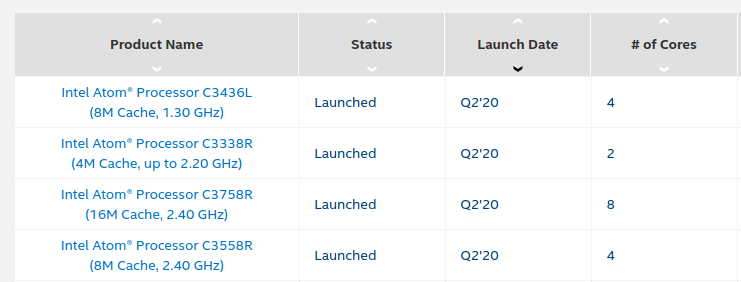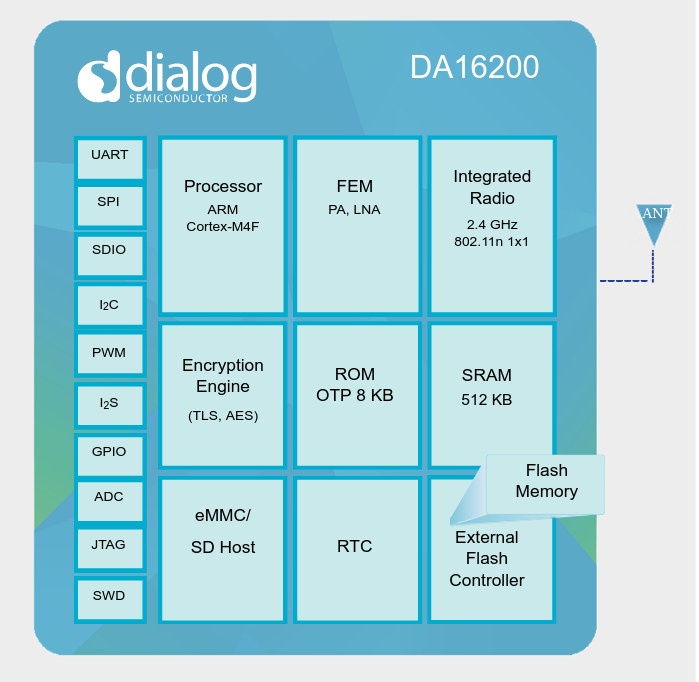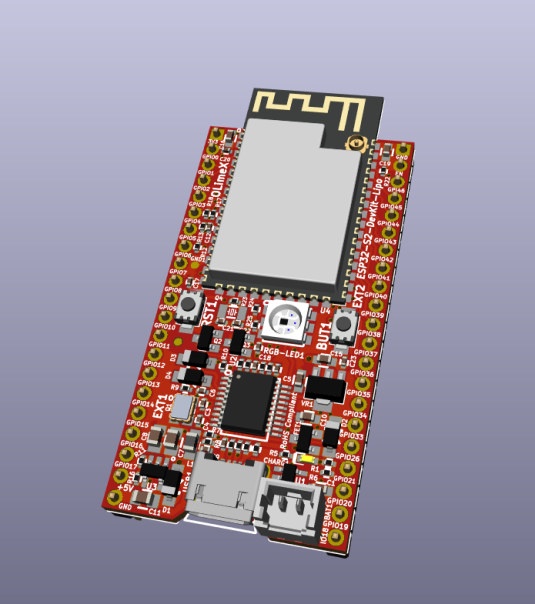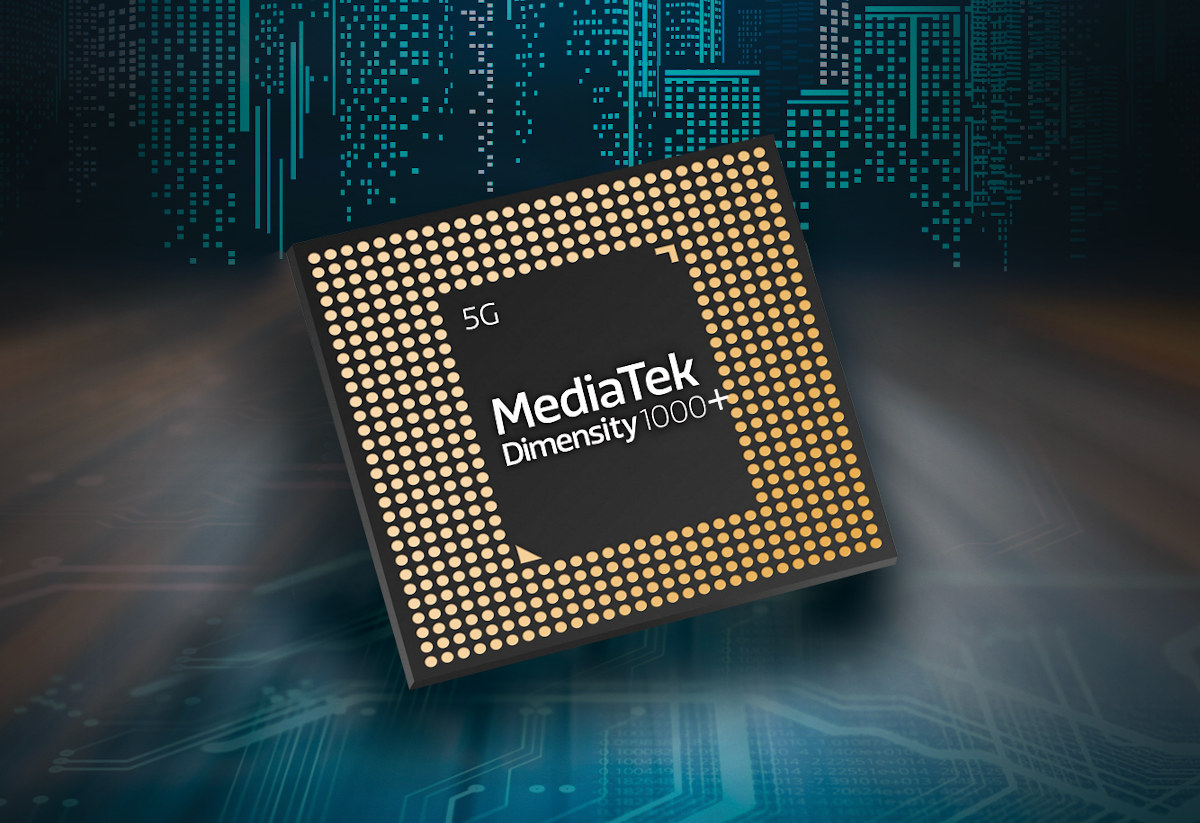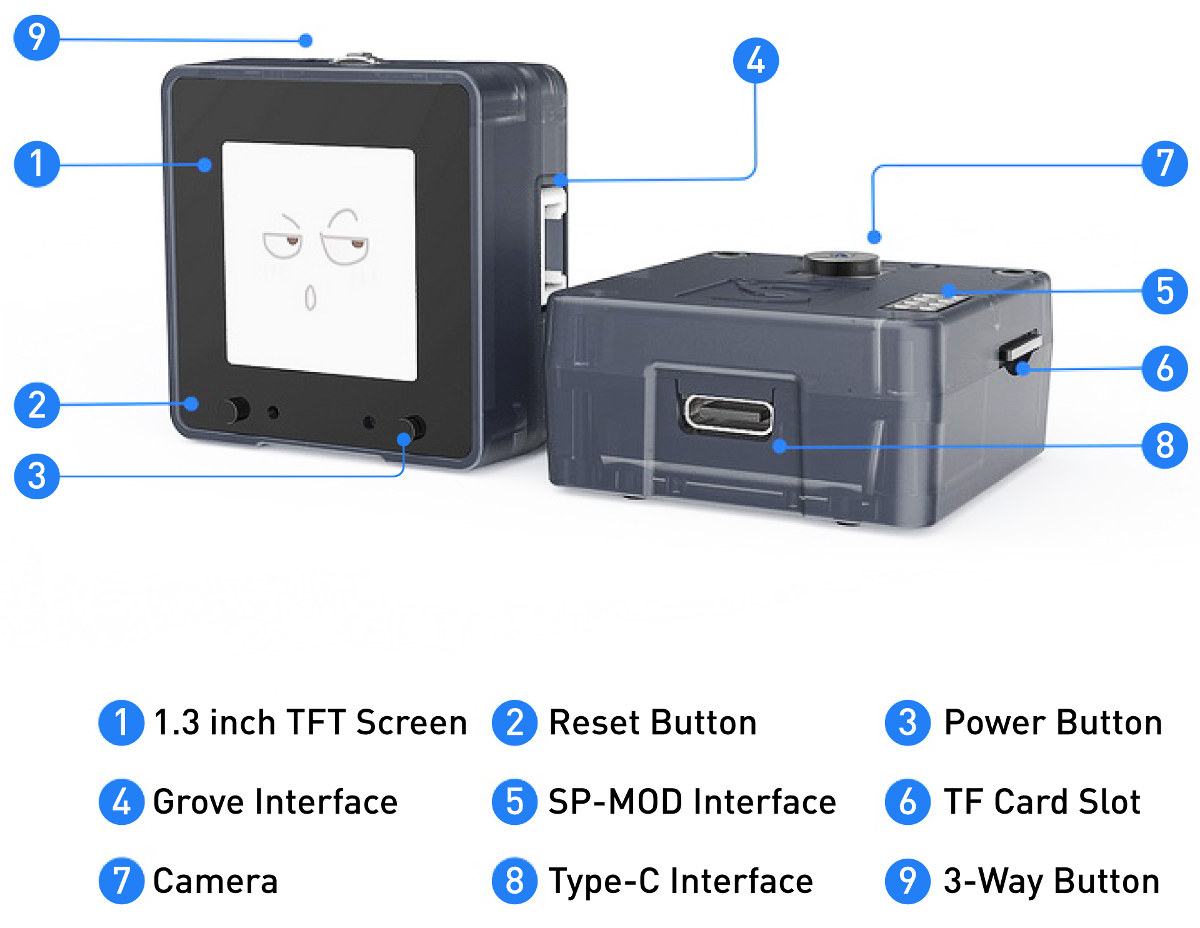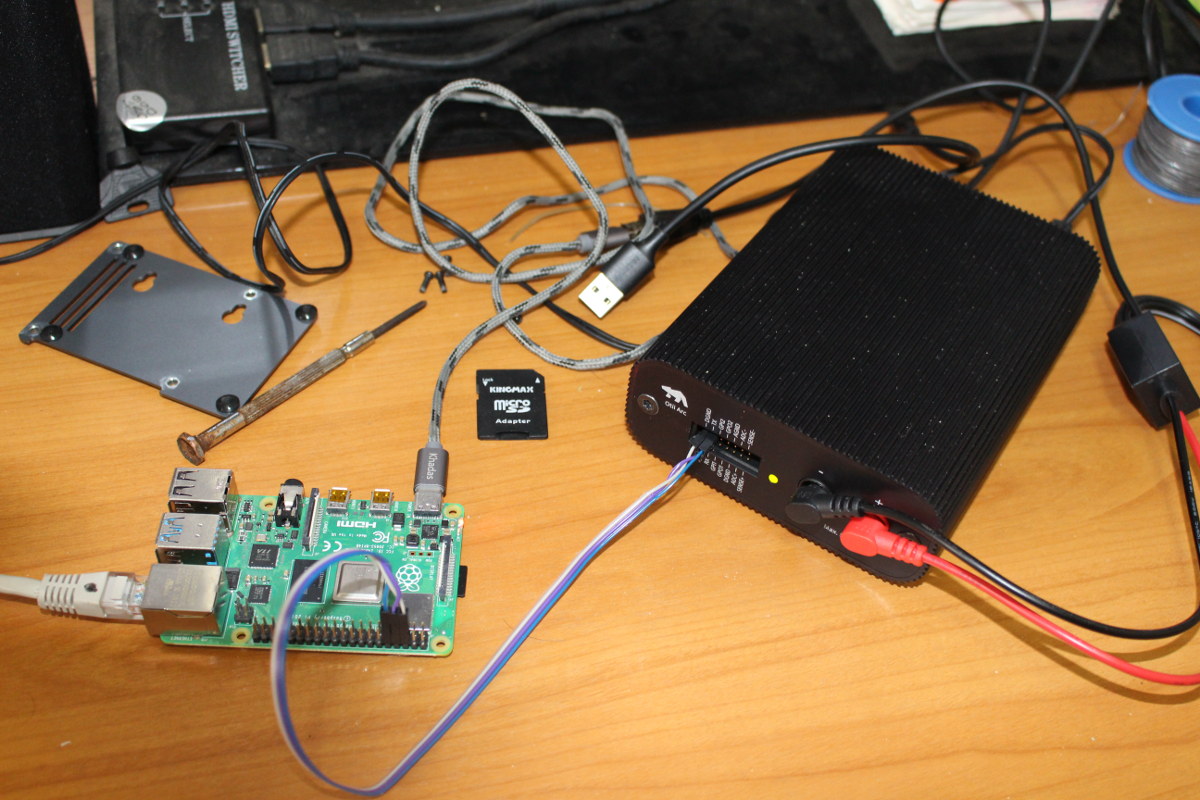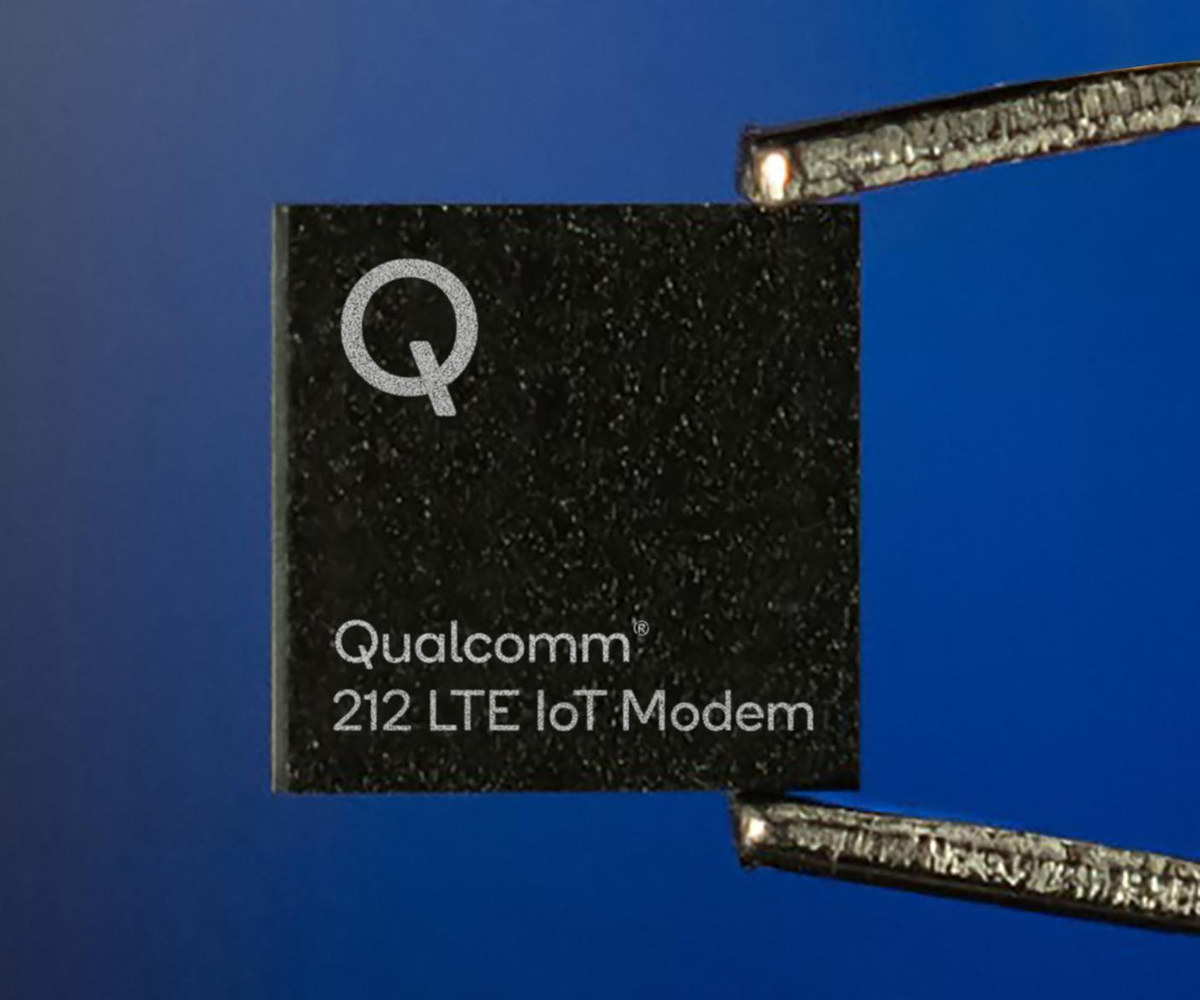Intel Atom C3000 “Denverton” processors were first unveiled in 2016 for low power servers, and are now found in fanless network appliances and server motherboards. Intel has now quietly launched three new Atom Denverton “Refresh” and one “Low Power” processors, namely Intel Atom C3436L, C3338R, C3758R, and C3558R. Highlights for the “refreshed” and current processors: Intel Atom C3436L quad-core processor @ 1.3 GHz with 8MB cache, 10.75W TDP Intel Atom C3338R dual-core processor @ 1.8 GHz / 2.2 GHz (Turbo) with 4MB cache, 10.5W TDP Intel Atom C3558R quad-core processor @ 2.4 GHz with 8MB cache, 17W TDP Intel Atom C3758R octa-core processor @ 2.4 GHz with 16MB cache, 26W TDP Intel Atom C3338 dual-core processor @ 1.5 GHz . 2.2 GHz (Turbo) with 4MB cache, 8.5W TDP Intel Atom C3558 quad-core processor @ 2.2 GHz with 8MB cache, 16W TDP Intel Atom C3758 octa-core processor @ 2.2 GHz with […]
Dialog DA16200 WiFi SoC Promises a Year of Battery Life for Always-Connected IoT Devices
WiFi is omnipresent, and many IoT devices are relying on the wireless standard for connectivity, but as most of you will already know, WiFi suffers from high-power consumption and may not always be suitable for battery-operated devices. There are always battery optimization tricks to use WiFi on battery-powered devices, for example, a solar camera using PIR to only record and transmit video when needed, or a board optimized to consume as little as possible in deep sleep waking up only when necessary. Those tricks are not applicable to all use cases, so Dialog Semiconductor has launched DA16200 Wi-Fi SoC delivering year plus battery life for always-connected Wi-Fi IoT devices. DA16200 key features and specifications: MCU Core – Arm Cortex M4F @ up to 160 MHz Memory – 512 KB SRAM Storage – 256 kB ROM, 8KB OTP ROM, external flash controller, eMMC, SD host Connectivity 2.4 GHz, 20 MHz channel […]
Olimex ESP32-S2-Devkit-LiPo WiFi Board Consumes as Little as 2uA in Sleep Mode
When we covered ESP32 powered TTGO T-Watch-2000 smartwatch this week-end, people noted that with a 350 mAh battery, the watch would last about 3.65 days considering a 4mA drain with the screen always off, WiFI and Bluetooth off, and around 65mA when the screen is on good for about 5 hours of continuous use without Bluetooth nor WiFi. But it’s possible to make a much more-efficient ESP32-S2 Wifi board, as demonstrated by Olimex with their upcoming ESP32-32-Devkit-LiPo based on ESP32-S2-Saola-1 with circuitry to support LiPo batteries. They designed the board with an ultra-low-power power supply circuit which makes current consumption during sleep only 6uA, 4 of which are due to the battery measurement resistor divider, meaning the board should consume only 2uA in sleep mode or about 10 times less than other ESP32 Olimex boards. When reviewed Qoitech Otii power measurement & DAQ tool, we also noted power consumption could […]
MediaTek Dimensity 1000+ 5G Mobile SoC Supports 144Hz FHD+ Displays, 5G UltraSave Technology, and More
MediaTek Dimensity 1000 5G processor for premium mobile devices was announced in Q4 2019 with eight Cortex-A77/A55 cores, an Arm Mali-G77 MC9, and APU 3.0 AI coprocessor. Since then, several companies have announced plans to launch Dimensity 1000 smartphones with products such as Astro Slide 5G Transformer. But while there aren’t any Dimensity 1000 phones available for sale just yet (AFAIK), MediaTek has already announced an updated version with Dimensity 1000+ (Dimensity 1000 Plus). The new version of the processor runs the CPU and GPU cores at the same frequencies, and the differences are instead in other specific features of the processor, as we’ve highlighted below. MediaTek Dimensity 1000+ specification: Processor 4x Arm Cortex-A77 @ 2.6GHz 4x Arm Cortex-A55 @ 2.0GHz DynamIQ heterogeneous multi-processing technology GPU – 9-core Arm Mali-G77 MC9 AI Coprocessor – APU 3.0 hexa-core AI accelerator with 2x big cores, 3x small cores, and 1x tiny core […]
Sipeed MaixCube is a Fully Integrated AI Development Platform Powered by Kendryte K210 RISC-V SoC
Sipeed has made several boards and kits based on Kendryte K210 RISC-V processor for low-power AI workloads such as face detection or object recognition including Maixduino board and Grove AI HAT that ship with camera and display. The company has now come up with MaixCube all-in-one development platform that houses Sipeed M1 module, a display, a camera, and a battery into a plastic case that’s somewhat similar to MStack M5StickV but with a larger display, and variations in the form factor and features. Sipeed MaixCube specifications: SoC – Kendryte K210 dual-core 64-bit RISC-V processor @ 400 MHz (overclockable to 600 MHz) with FPU, 8MB SRAM, KPU AI accelerator, APU audio processor, and FFT accelerator Storage – 128 Mbit flash, MicroSD card slot Display – 1.3″ TFT screen with 240×240 resolution Camera – OV7740 sensor (VGA camera) Audio – Built-in microphone, external speakers support; ES8374 audio codec USB – 1x USB […]
Getting Started with Qoitech Otii Developer Tool using ESP8266 and Raspberry Pi 4 Boards
Last month, I received Qoitech Otii Arc power supply, power meter, and DAQ unit that aims at helping hardware and software engineers develop energy-efficient products. I’ve now had time to test the unit with an ESP8266 board and Raspberry Pi 4 SBC, so I’ll show how to get started and my overall experience with the hardware and program. Requirements and Initial Setup The unit takes a 9V power supply or micro USB adapter as power input, but power output is done through banana plugs. I did not have any cables with banana plugs so I bought one on eBay for about $5 shipped. This cable is really convenient with output to USB (female connector), crocodile clips, and hook clips. However, as we’ll see below it may not be suitable for all types of loads, and you may have to make your own with a higher rated cable. You’ll need to […]
Qualcomm 212 LTE IoT Modem Supports LTE Cat NB2, Promises Higher Power Efficiency
A few years ago, Qualcomm launched Snapdragon 212 processor for smart speakers. This post has nothing to do with this, but strangely the company decided to reuse the 212 number in its new Qualcomm 212 LTE IoT modem with the claim of being the “world’s most power-efficient single-mode (NB2) chipset”. Specifically, Qualcomm 212 LTE IoT Modem is said to require less than one micro-amp (1uA) of sleep current, support ultra-low system-level cut-off voltage (as low as 2.2V) with provisions for adapting power usage according to varying source power levels. Qualcomm® 212 LTE IoT Modem key features and specifications: MCU Core – Arm Cortex M3 @ up to 204 MHz Cellular Connectivity 3GPP Rel.14 LTE capabilities: Cat-NB2 with multi-carrier NPRACH and Paging, Cat-NB2 Release Assistance Indication (RAI), Cat-NB2 with larger TBS and 2 HARQ processes Peak Speeds – DL: 127 kbps; UL: 158.5 kbps Frequency Bands (700Mhz to 2.1 GHz for […]
MIOTY Silicon Vendor Agnostic, Scalable LPWAN Standard to Take on LoRaWAN, NB-IoT
[April 6th update: The article was updated to reflect Fraunhofer invented the technology] There are plenty of LPWAN (Low Power Wide Area Networks) standards designed for low power, low bitrate and long-range connectivity with the most popular currently being NB-IoT and LoRaWAN. But Texas Instruments has joined other smaller companies (Fraunhofer, Ragsol, STACKFORCE, WIKA…) to form the MIOTY alliance in order to develop and promote a new LPWAN standard operating in the sub-GHz range called MIOTY. Texas Instruments explains MIOTY was born due to a lack of scalability and robustness (interferences issues) of current LPWAN solutions. But just like other similar low power WAN standards, it aims to support long-range while achieving long battery life, but MIOTY is also supposed to help IoT developers mitigate performance degradation in high-node-count networks. MIOTY works in the same license-free bands (868 MHz, 915 MHz …) as LoRa radios with no costs involved to […]


